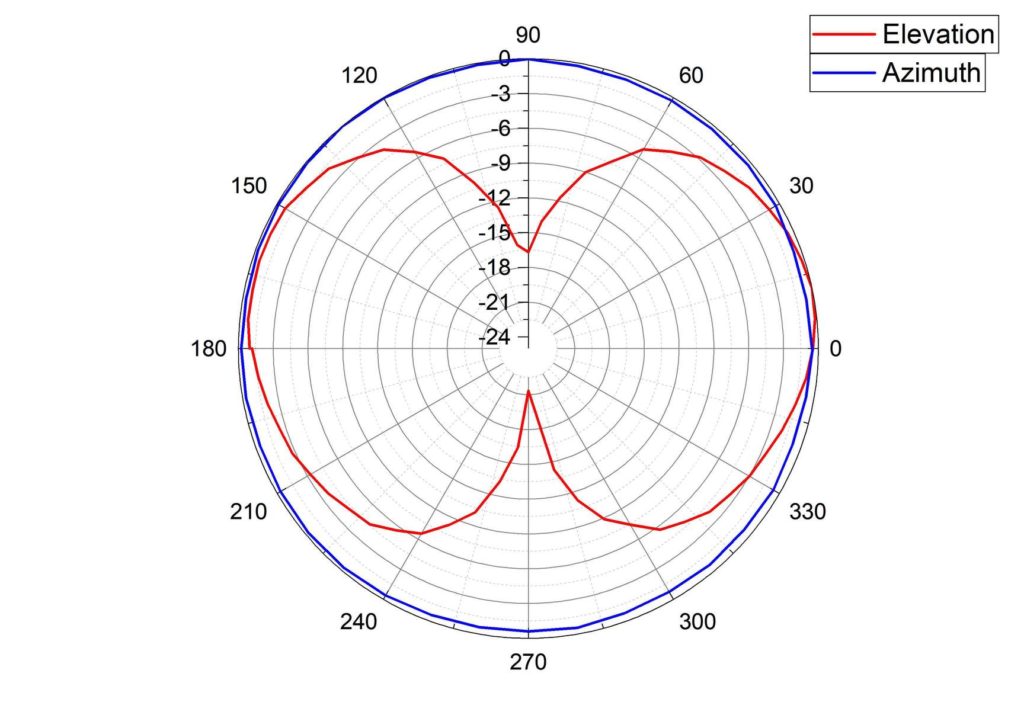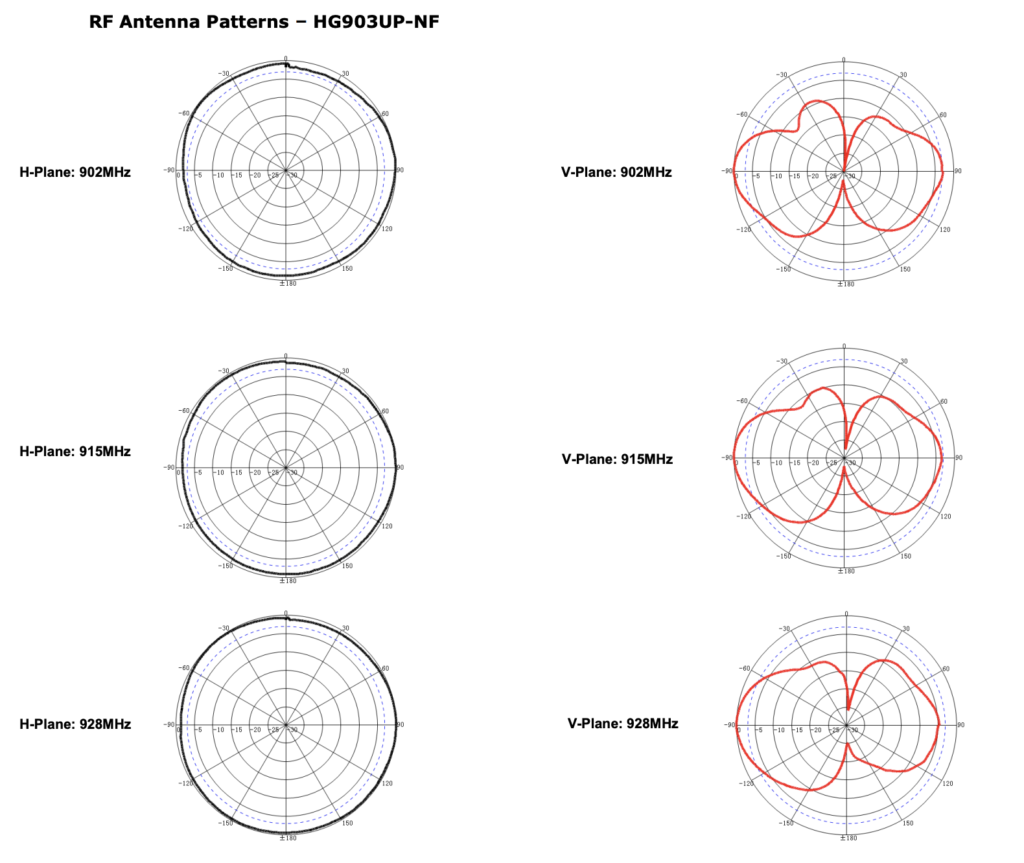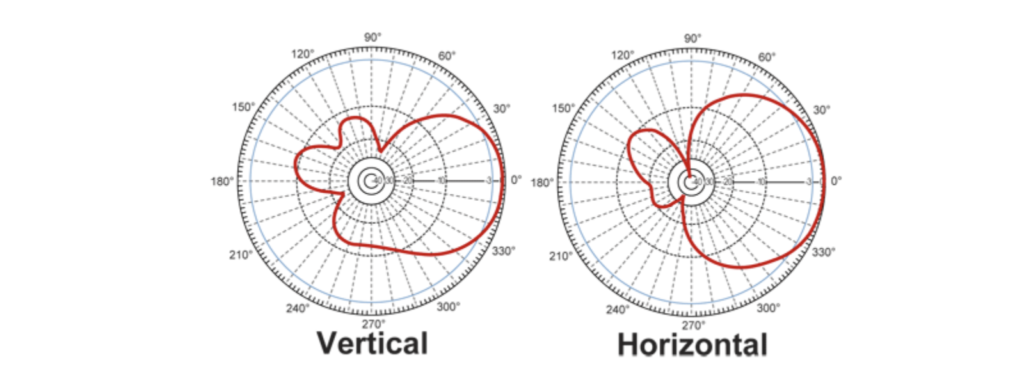Helium is a gateway into the world of RF, or radio frequency. While the easiest thing to do when you get your hotspot is just plug it in and set it in a window, most of the time you’ll earn far more if you optimize a bit. Most of those optimizations are focused on improving the RF signal your hotspot can beacon (also called “transmitting”) as well as improving the ability of your hotspot to witness (also called “receiving”.)
I’ll assume you’ve read the piece on antennas I wrote that covers some basics. Now, let’s do a deeper dive into antennas and radiation patterns.
Let’s start with a zero gain omni antenna. An omni directional antenna with zero gain will theoretically radiate RF energy in a perfect globe pattern all around it. Now, that’s perfection. In reality, most low gain (say, 4 dBi or lower) antennas will do a pretty good job, but will have gaps directly above and below the antenna.
The way we “see” an antenna’s RF pattern is by visualizing what it looks like from the top and the side.
Here’s a lower gain antenna’s RF pattern.

See how it radiates out evenly in every direction to the side, but directly above and below it there are gaps in the RF emitted? That’s pretty typical for an omni directional antenna.
Here’s another example from the antenna I use on most of my installs, the HNTenna. MP Antenna (the manufacturer of the HNTenna), puts both patterns together. The Elevation is what it looks like when you’re seeing the antenna from the side (red line) and the Azimuth is what it looks like from the top down (blue line).

All manufacturer’s will have a radiation pattern for their antenna, and most will share it with you. That pattern can change at different frequencies on the same antenna. Here’s an example of a 3.0dBi L‑Com at different frequencies.

Now, all the antennas so far look pretty similar even at different frequencies, right? They’re all “omni directional” antennas, meaning they’re supposed to radiate antenna in all (omni) directions. What does it look like when you get a sector (also called a directional) antenna? Check this out!

This antenna was designed to radiate most of it’s energy in a vertical beamwidth of 60 degrees and a horizontal beamwidth of 70 degrees. This is the antenna you’d use if you wanted to punch through a thick brush line with a bunch of Hotspots on the other side of it and nothing behind you.
Antenna Polarization
Next up is antenna polarization. This hasn’t gotten much press, mostly because damn near every antenna you can buy is polarized *vertically*. In simple terms, that means the RF waves it emit go up and down. A *horizontally* polarized antenna will emit RF waves that go side to side.

Why is that important? Well, if a vertically polarized antenna and a horizontally polarized antenna are trying to beacon or witness each other, they won’t be able to, even if they’re on the same frequency! That’s because the “up and down” waves of a VP antenna won’t intersect with the “side to side” waves of an HP antenna.
“OK Nik, so why should I care about this? If most of the antennas out there are vertically polarized, I’m fine, right?” Sort of.
See, when that radio energy hits an obstacle, it usually bounces off *and changes orientation*. That means a vertically polarized wave can now be a horizontally polarized one. If your hotspot is “listening” on a vertically polarized antenna, it won’t witness RF signals that are coming in on the horizontal plane, unless…
Here’s the last twist for ya: You can get a “multi” polarized antenna. This allows you to both transmit and receive multiple signal orientations. That comes at a cost of a slight reduction in power as the signal is radiated out on multiple planes, BUT…I’ve used a multi-polarized antenna and made 170km witnesses, so it’s not an issue in the real world application.
I’ll finish off with a quick way to think about what antenna you should buy.
Indoor antenna — Use the stock antenna. Get it up as high in your building as possible and next to a window. If you MUST buy an indoor antenna, pick up the HNTenna indoor version.
Outdoor antenna, urban area, limited clear lines of sight — You’ve got a few options.
HNTenna Outdoor — This is a multi-polarized antenna and what I recommend for most placements.
McGill 3 dBi - A great omni pattern antenna that’ll do well in most urban deployments.
McGill 6 dBi - Want to try the middle range, as recommended in this video?
Outdoor antenna — Has Facebook/Reddit/Twitter convinced you that high gain is the best bet? If you’re desperate for a “high gain” antenna, get a 9 dBi from McGill.
Brush Penetrator — Ok, you really want this? Keep in mind, this antenna is almost never the right choice. But since you asked for it, here it is.
That’s it! Now you know a bunch more about antenna radiation patterns and how to choose the right one for you. Rock on!

Leave a Reply